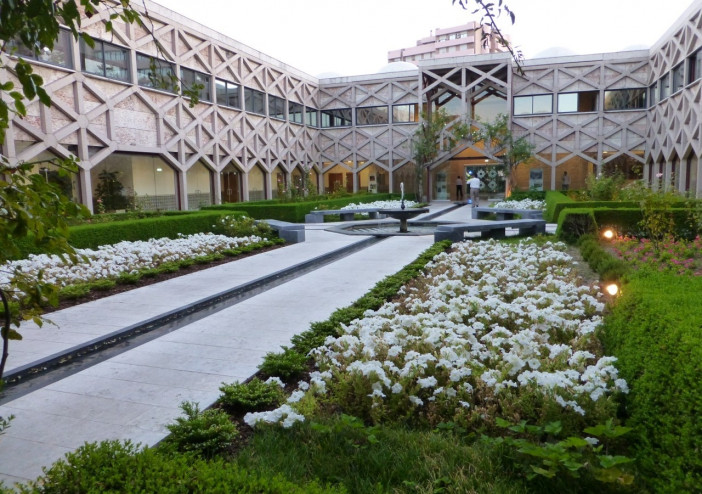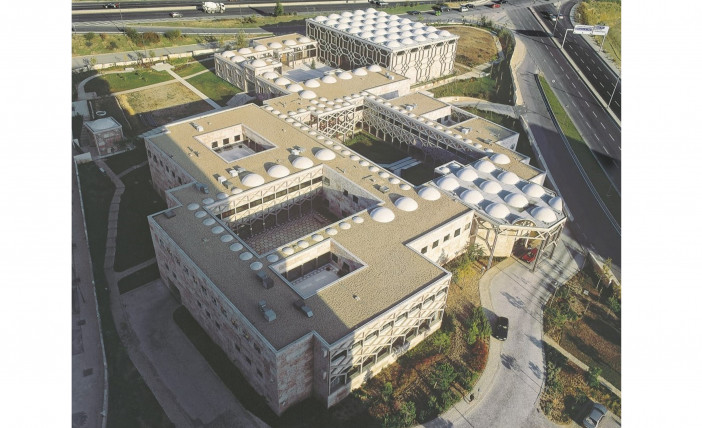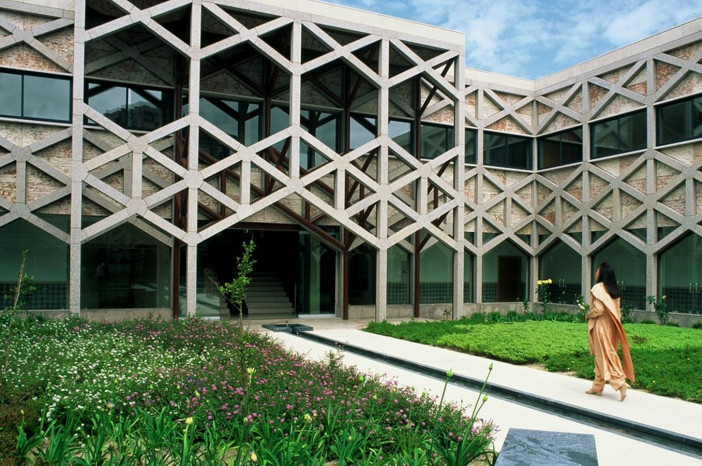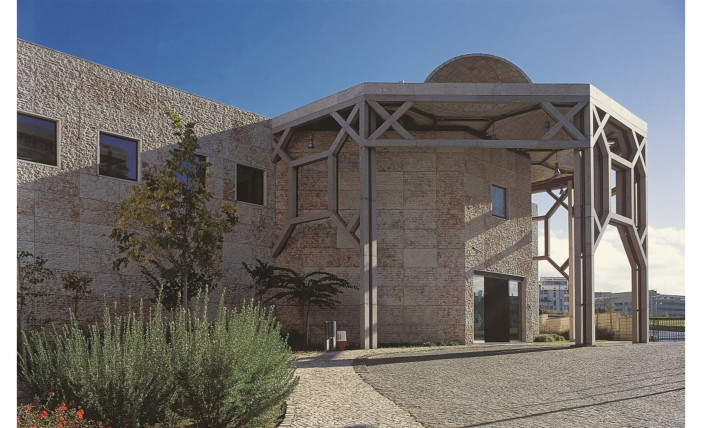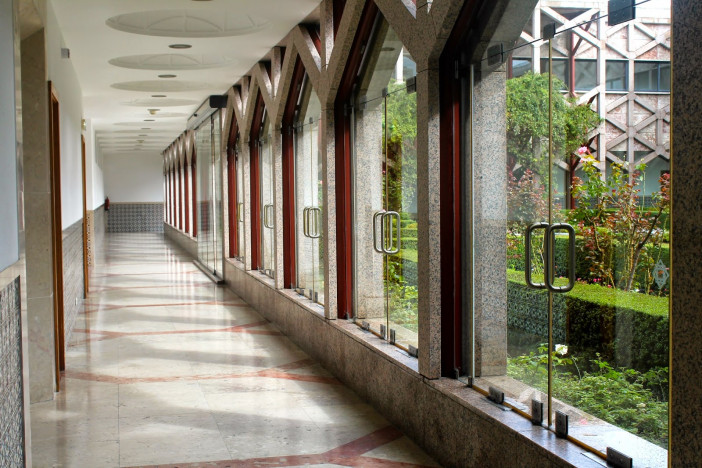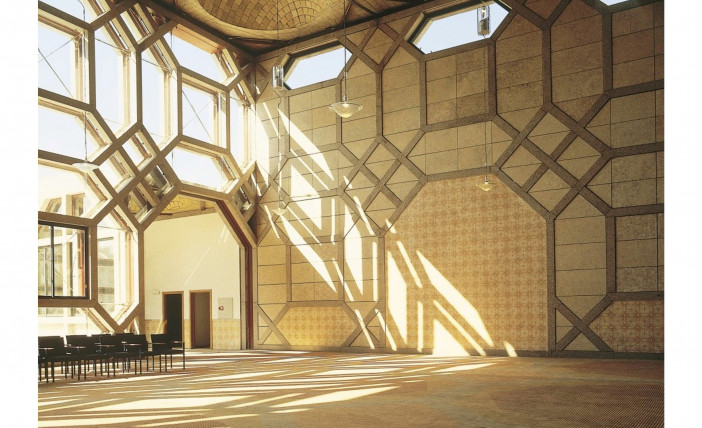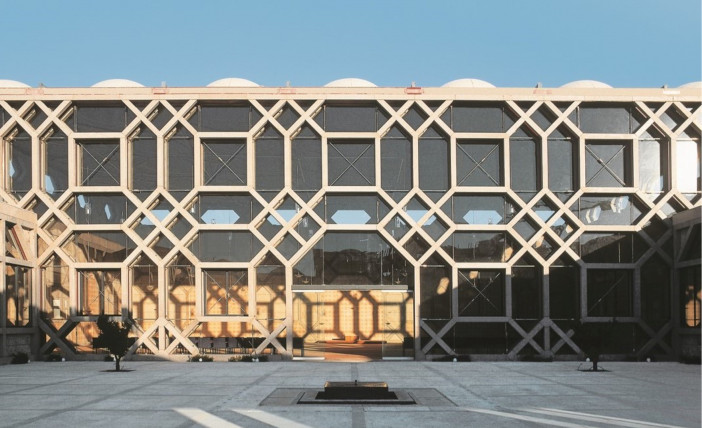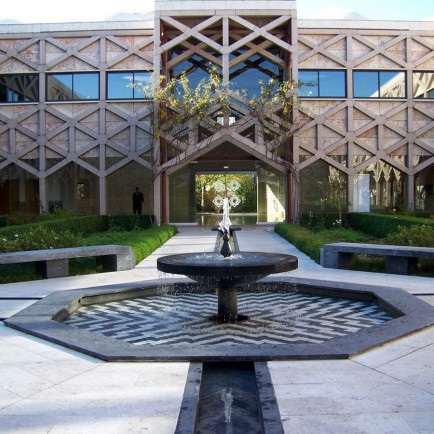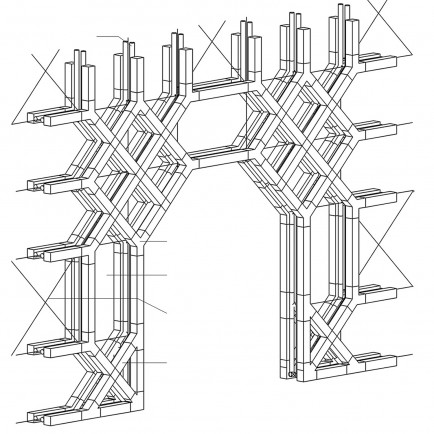Lisbon Ismaili Centre
History
Centro Ismaili, on Avenida Lusíada in Lisbon, work by the architects, Raj Rewal, Frederico Valsassina Arquitectos and PROAP, built in 1998, a space for the meeting of Ismaili Muslims, as well as their relationship and openness to the community in general . The complex developed in composition with the topography of the territory, organizes the various spaces according to their social, institutional and religious functions, articulating them in a continuous relationship with outdoor spaces, patios and gardens, always maintaining a dialogue between the interior and the outside.
The Ismaili Center in Lisbon, at Lusiada Avenue, a work of the architects, Raj Rewal, Frederico Valsassina Architects and PROAP and built in 1998, a space for the meeting of the Ismaili Muslims, as well as their relationship and openness to the general community. The complex composition developed with the topography of the territory, organizes the various spaces according to their functions, social, institutional and religious, articulating them in continuous relationship with outdoor spaces, patios and gardens, remaining always a dialogue between the interior and the outside.
Urban and Architectural
The main building consists of religious halls, social halls, classrooms, an amphitheater, and an exhibition gallery. The Aga Khan Development Panel, which works through the Aga Khan Foundation, has its main office in the center. This foundation deals with the organization in various parts of the area’s religious, educational, and health aspects, especially in pre-school education.
The center houses two Jamatkhanas, one which consists of a large courtyard covered by 35 domes, that acts as a gathering spot for the community on special occasions, and a smaller one for a smaller group of people.
The walls of the reception, the main entry point, are decorated with tiling on which is written the 98 names of Allah. The tiling with the Islamic inscriptions showcased a blend of the Islamic and the local Portuguese culture, as tiling is an age-old tradition in the country. Many other building elements, such as the walls, windows, etc., are also covered with various forms of geometric Islamic designs. It uses a combination of textures and patterns throughout the interiors, with shades and forms that further enhance the tranquil nature of the space.
Description
A work where the references of the Islamic universe are decisive in the architectural composition, the patios, the spaces of nature and water, a purifying element always present in the outdoor spaces and that accompanies the user from the entrance, in the patio of social activities leading him to to the prayer space on the upper floor of the center. The presence of constant geometry, which in culture means the search for perfection, is drawn in the structure, in the spatial axes, in the fonts, in the details, and in the spatial symmetry between vertical and horizontal planes.
References
Details
Location
Av. Lusíada 1, 1600-001 Lisboa, Portugal
Worshippers
950
Architect Name
Year of Build
1998
Area
18000 m²
Drawings
Map
History
Centro Ismaili, on Avenida Lusíada in Lisbon, work by the architects, Raj Rewal, Frederico Valsassina Arquitectos and PROAP, built in 1998, a space for the meeting of Ismaili Muslims, as well as their relationship and openness to the community in general . The complex developed in composition with the topography of the territory, organizes the various spaces according to their social, institutional and religious functions, articulating them in a continuous relationship with outdoor spaces, patios and gardens, always maintaining a dialogue between the interior and the outside.
The Ismaili Center in Lisbon, at Lusiada Avenue, a work of the architects, Raj Rewal, Frederico Valsassina Architects and PROAP and built in 1998, a space for the meeting of the Ismaili Muslims, as well as their relationship and openness to the general community. The complex composition developed with the topography of the territory, organizes the various spaces according to their functions, social, institutional and religious, articulating them in continuous relationship with outdoor spaces, patios and gardens, remaining always a dialogue between the interior and the outside.
Urban and Architectural
The main building consists of religious halls, social halls, classrooms, an amphitheater, and an exhibition gallery. The Aga Khan Development Panel, which works through the Aga Khan Foundation, has its main office in the center. This foundation deals with the organization in various parts of the area’s religious, educational, and health aspects, especially in pre-school education.
The center houses two Jamatkhanas, one which consists of a large courtyard covered by 35 domes, that acts as a gathering spot for the community on special occasions, and a smaller one for a smaller group of people.
The walls of the reception, the main entry point, are decorated with tiling on which is written the 98 names of Allah. The tiling with the Islamic inscriptions showcased a blend of the Islamic and the local Portuguese culture, as tiling is an age-old tradition in the country. Many other building elements, such as the walls, windows, etc., are also covered with various forms of geometric Islamic designs. It uses a combination of textures and patterns throughout the interiors, with shades and forms that further enhance the tranquil nature of the space.
Description
A work where the references of the Islamic universe are decisive in the architectural composition, the patios, the spaces of nature and water, a purifying element always present in the outdoor spaces and that accompanies the user from the entrance, in the patio of social activities leading him to to the prayer space on the upper floor of the center. The presence of constant geometry, which in culture means the search for perfection, is drawn in the structure, in the spatial axes, in the fonts, in the details, and in the spatial symmetry between vertical and horizontal planes.


